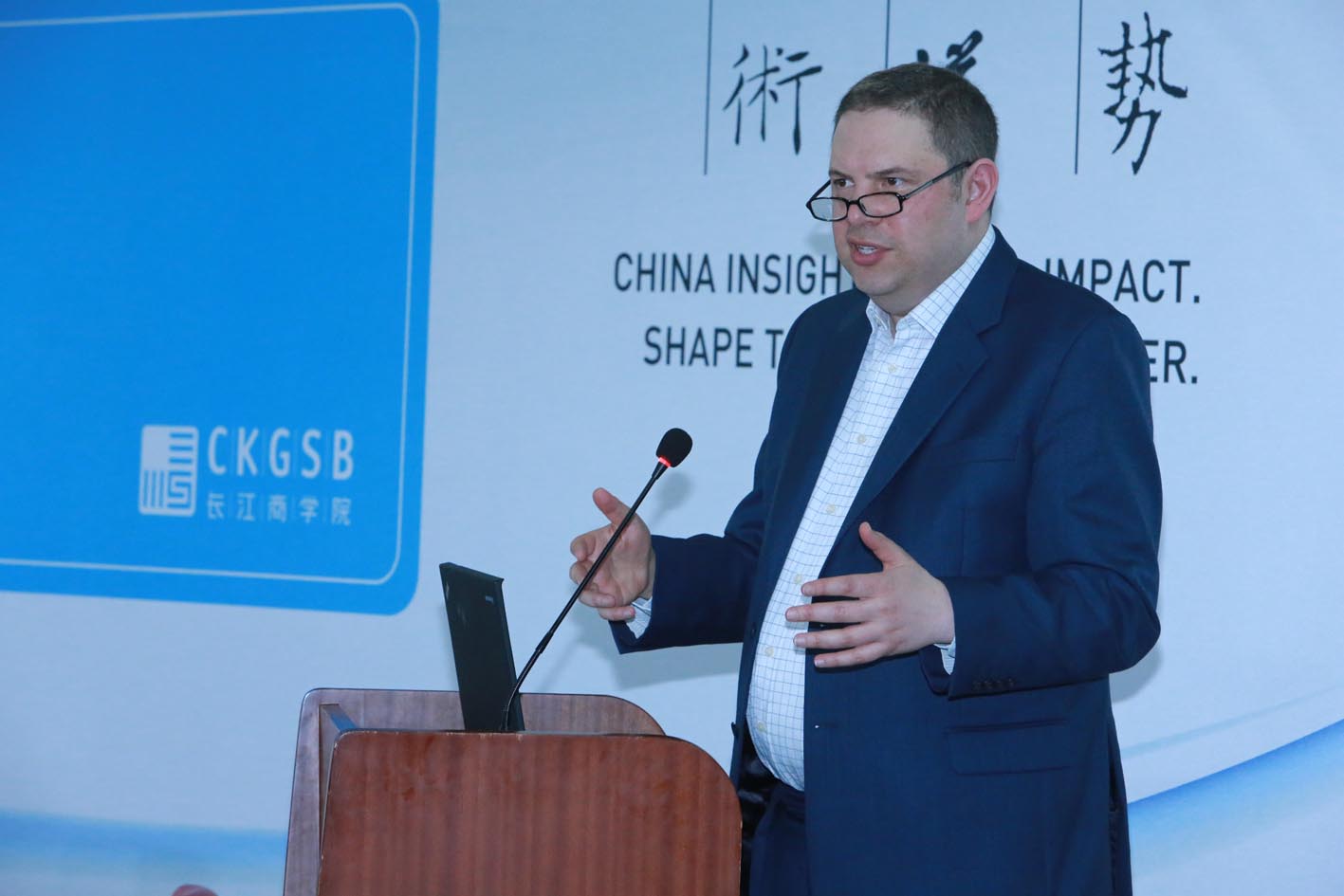Andrew Rashbass, Global CEO of The Economist Group, spoke at CKGSB’s Beijing headquarters on Monday, May 27 during a discussion on the future of media. Mr. Rashbass rarely speaks in public, so this was a unique, first-hand opportunity to get his thoughts on how traditional publishers can thrive on digital platforms. As the leader of The Economist, Mr. Rashbass is known as a pioneer who developed new business models and strategies that transformed how The Economist is distributed and read. His insights have provided a framework for media companies to understand how readers use different technologies in different settings.

In the speech, called Lean Back 2.0, Mr. Rashbass talked about how “everything old is new again,” because of changes in the technology people use to read. Traditional printed magazines and newspapers are a “lean back” technology: people lean back in their chairs to focus on their reading and immerse themselves in the content. But computers introduced a “lean forward” style of reading that encourages skimming, favors short articles, and makes it easy to share the content and have conversations about it.
But now, tablets and smart phones have returned us to the “lean back” style of reading. Readers on these devices once again wish to lean back to enjoy the content and concentrate on the information and knowledge. “If you think about all the adverts for the iPad,” he pointed out while talking about when the iPad was first introduced, “the pictures that were shown were of people literally leaning back.” What has surprised Mr. Rashbass is that readers will actually spend more time reading on tablets and smart phones than they did with magazines. “We find that people read The Economist on an iPad for hours, not for minutes. What’s more, they read in depth.”
Another surprising finding for Mr. Rashbass is that people like to use both print and digital media, rather than using one or the other exclusively. Readers of the Economist are likely to read the magazine, read the digital version, and the website. “It’s a multi-platform world,” he said. “People consume across the spectrum.”
Mr. Rashbass also talked about the audience, the consumer. We’re in a period of “Mass Intelligence” he believes. In the past, there was a distinction between elite media and mass media. But now it’s clear that many people pay attention to both. “People are consuming across the whole range of media, from the popular to the more intellectually stimulating.” Other examples of Mass Intelligence include independent movies, pay TV, and public radio listeners. “People recognize that they want to be more intelligent,” he said. “What is cool today is to be smart.”
In the last half of his speech, Mr. Rashbass looked at publishing as a business. In the past, the business model was simple: Sell content to readers through magazine subscriptions, and earn revenue from marketing and advertising. But now the model has become more complicated. Advertisers wish to reach consumers on the web, and readers access content on a variety of platforms and find the content through social media and other means.
Because today’s media landscape is complex, a new business model is needed: Lean back, lean forward, and “creating intellectual dialogue, together”, which incorporates connection, engagement and thinking.
Profit derives from circulation and Mr. Rashbass identifies four factors that will increase circulation profit:
Digital media can be useful for all four of these factors. For example, by using social media, acquisition costs can decrease. And you can charge customers a premium to have access to the same content on different platforms, such as subscriptions to both the print magazine and digital editions.
Ultimately, Mr. Rashbass credits luck as the reason that The Economist is doing so well. The first article ever written for The Economist, in 1843, was about Brazil, he pointed out. Now there are a large number of readers who are interested in the same international and economic topics. “We happen to have a product that works incredibly well in the digital age.”
After his talk, Mr. Rashbass participated in a panel discussion called “Media in Transition: Strategies for New Technologies,” hosted by CKGSB. The other panelists, many of them CKGSB alumni, were:
Moderated by CKGSB’s Jon Liao, Associate Dean and Professor of Managerial Practice, Strategy, Innovation and Entrepreneurship, the discussion explored the challenges that both Chinese and international publishers face.
About Andrew Rashbass

Andrew Rashbass is Chief Executive of The Economist Group, the leading source of analysis on international business and world affairs. Through its brands (The Economist, EuroFinance, and Roll Call), the Group delivers its information and services in over 200 countries via newspapers, magazines, reports, events, websites and other electronic channels. Andrew became Chief Executive in July 2008.
Prior to that, Andrew was publisher of The Economist and before that managing director of Economist.com and Group chief information officer.
Before joining The Economist Group in 1997, Andrew worked at Associated Newspaper Ltd, one of the UK’s largest media groups. Andrew started his career at Andersen Consulting, now called Accenture.